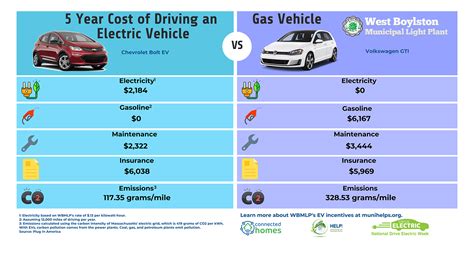Driving the Future: How California’s Electric Car Rebates are Changing the Game
As the urgency for sustainable solutions intensifies, California is leading the charge into a greener automotive future. With its ambitious goals for reducing greenhouse gas emissions, the state has implemented a series of incentives aimed at promoting electric vehicle (EV) adoption. Among these incentives are electric car rebates, a key strategy designed to encourage both consumers and manufacturers to embrace the electric revolution.
The Incentive Landscape
California offers several rebates and incentives to stimulate electric vehicle purchases. At the forefront is the Clean Vehicle Rebate Project (CVRP), which provides rebates of up to $2,000 for eligible new electric vehicles. These rebates are available to both individuals and businesses, significantly lowering the upfront cost of what can be an otherwise expensive transition to electric vehicles.
In addition to the CVRP, the state also offers tax credits and additional local incentives depending on the county or municipality. For example, some areas provide rebates for the installation of home charging stations, further enhancing the appeal of owning an electric vehicle.
The Economic Impact
The push for electric vehicles isn’t just an environmental initiative; it’s also an economic one. The electric vehicle market in California has grown substantially, supported by these rebates. Increased adoption not only fosters innovation in the automotive sector but also creates jobs in manufacturing, battery production, and charging infrastructure development.
Moreover, with a growing number of EVs on the road, there’s a shift in consumer spending patterns. Californians are investing in EVs, which means less money spent on gasoline and more allocation towards green technology and services. This shift is helping to stimulate the economy while paving the way for a sustainable future.
Environmental Benefits
Transitioning to electric vehicles plays a significant role in reducing California’s carbon footprint. Transportation accounts for a substantial portion of the state’s greenhouse gas emissions, and the adoption of EVs is one of the most effective ways to address this issue.
Electric vehicles produce zero tailpipe emissions, which means less air pollution in urban areas. California, often dealing with smog and poor air quality, stands to benefit significantly from a reduction in vehicle emissions. Moreover, as the energy grid becomes greener—with more renewable sources being utilized—EVs can become increasingly eco-friendly.
Challenges and Limitations
Despite the promising outlook, the transition to electric vehicles is not without challenges. The most significant barrier is often the initial cost of electric vehicles, which can still be higher than their gasoline counterparts. Although rebates help, many potential buyers are still deterred by the perceived expenses.
Infrastructure is another concern. While California has made substantial investments in public charging stations, many areas still lack sufficient access, making it challenging for potential EV owners to recharge. Addressing these infrastructure gaps will be crucial for sustained growth in the electric vehicle market.
The Role of Automakers
California’s electric vehicle rebates are not only motivating consumers but also challenging automakers to innovate. Many manufacturers are ramping up their electric offerings, with several committing to going fully electric in the coming years. This commitment is driven, in part, by California’s stringent emissions regulations and the associated incentives, which are encouraging manufacturers to rethink their product lines.
With automakers investing billions into R&D for electric vehicles and associated technologies like battery production and autonomous driving systems, we are witnessing a surge in new models and improved capabilities. This competitive environment is beneficial for consumers, offering a broader selection and better pricing on electric vehicles.
Future Outlook
As California continues to expand its electric vehicle incentive programs, the long-term outlook appears bright. The state is targeting to have 5 million electric vehicles by 2030, which would significantly reduce carbon emissions and bolster the green economy. With increasing awareness of climate change and the necessity for sustainable living, it’s likely that electric car rebates will play a pivotal role in driving this transition.
Conclusion
California’s electric car rebates are changing the game by making the transition to electric vehicles more accessible and appealing to consumers. By lowering the financial barriers to entry and supporting infrastructure development, California is not just promoting cleaner transport; it’s setting an example for other states and countries to follow. As we look to the future, the combination of government incentives, technological advancements, and consumer demand will likely create a vibrant electric vehicle market that benefits the economy and the environment alike.
FAQs
What is the Clean Vehicle Rebate Project (CVRP)?
The CVRP is a California state program that provides rebates for the purchase or lease of eligible electric vehicles, promoting the adoption of cleaner transportation options.
How much can I get from the CVRP?
The CVRP offers rebates of up to $2,000 for eligible new electric vehicles. The amount may vary based on the vehicle’s price and eligibility criteria.
Are there other incentives available for electric vehicles in California?
Yes, in addition to the CVRP, there are local incentives and tax credits available depending on your area. Some regions offer rebates for the installation of home EV charging stations.
What challenges do electric vehicles face in California?
Some challenges include the initial cost of electric vehicles and the availability of charging infrastructure, particularly in less populated areas.
What impact do electric vehicle rebates have on the environment?
Electric vehicle rebates help reduce greenhouse gas emissions by encouraging the adoption of zero-emission vehicles, contributing to improved air quality and a decrease in pollution.
Download Rebate California Electric Car
